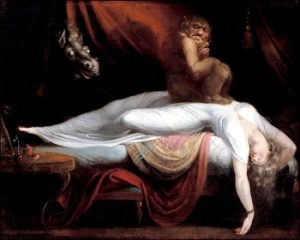 I realize that Gothic art is not for everyone. It is perhaps the most misunderstood form of artistic expression ever produced in the art world. You won’t find this kind of art on the Target Digital Marketing Company IG Page but if you do some searching on Google you will come across some outstanding pieces of art work. I have seen comments from some of my readers that have the impression that Goth arrived on the scene with the advent of black nail polish however it has been around for much longer.
I realize that Gothic art is not for everyone. It is perhaps the most misunderstood form of artistic expression ever produced in the art world. You won’t find this kind of art on the Target Digital Marketing Company IG Page but if you do some searching on Google you will come across some outstanding pieces of art work. I have seen comments from some of my readers that have the impression that Goth arrived on the scene with the advent of black nail polish however it has been around for much longer.
While I appreciate the recent resurgence of interest, and adore many of the more contemporary artists, the works of great artists like Giotto di Bondone who dates back to the 13th and 14th century for example, still set my artistic nature ablaze. Nonetheless, the new kids on the block showing up in their long, black, stretch limousines for showings are the ones selling from our gallery walls.
While a little history is important, I won’t go into the depth of why Gothic art has endured. It speaks for itself. The core is religious and even spiritual in the eyes of the beholder. It has flowed with a self-directed liberty that branches out into the macabre and eerie, even sadistic and grotesque. All along the backdrop is a quality of expression found only in the deepest recesses of the human psyche.
It draws us in. Some of what is delivered by the modern Gothic expressionist is hard to pull away from. Standing in front of a painting by Hong Kuang for example, fills the observer with emotions akin to dread and darkness – hope, courage. At the same time, it’s hard to leave without succumbing to the all-consuming awesome details.
Goth speaks to our shadow selves. The anti-Christ of the mundane, Goth is not an ounce of sunshine and lemonade. To make their points even more explicit, modern Gothic artists take their work to Mount Calvary for a proper crucifixion. Death, gory, darkness and attempted destruction of the soul, are all parts of what an artist of the 21st century is often attempting to portray. There is no denying that it’s a competition of shock, disgust and horror rightfully considered as a truthful aspect of humanity. It’s all in play on some level in today’s world.
The beauty of Gothic Art stems from its early roots in the Renaissance era. From paintings to frescos mostly influenced by religious suppression, the artist had a chance to tell his – only men at that time – story without fear of being persecuted. The art cloaked in the reverence of the time towards saints and social superiors was a way to release a pent up anger that was sculpted or painted out as a work of beauty. The real beauty, of course, is the personal message that only the individual artist is able to know intimately.
Gothic and dark are synonymous. The play together like saints and sinners on holiday. Each carrying their own style for the observer to appreciate, dissect and immerse into. There is always room for more elegance and absurdity in the marketplace. Collectors can’t seem to get enough. It has to be even more outside the box and more outrageous since this art form has already stretched the limits of the bazaar.
With an unending source from unlimited imaginations of creative minds, Gothic will continue to be a major statement in the world of art. It’s difficult to imagine how its influences could be subtle, but in my next article I’ll introduce you to the world of gothic fashion where it first showed up as a fad, then a trend and now a staple of expression. Join me there and in the meantime . . .
Leave a comment below. What is your experience with Gothic Art in any or all of its expressions?